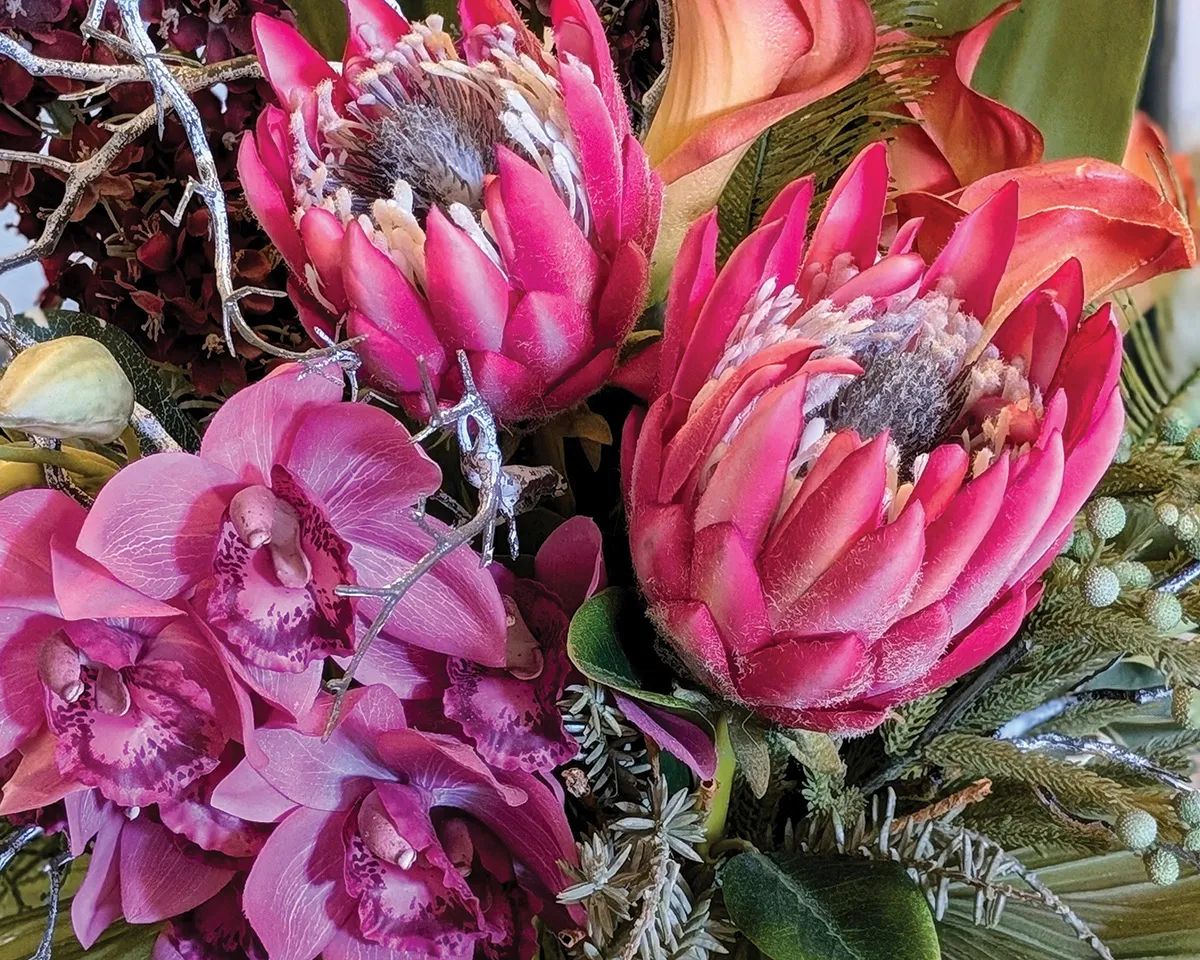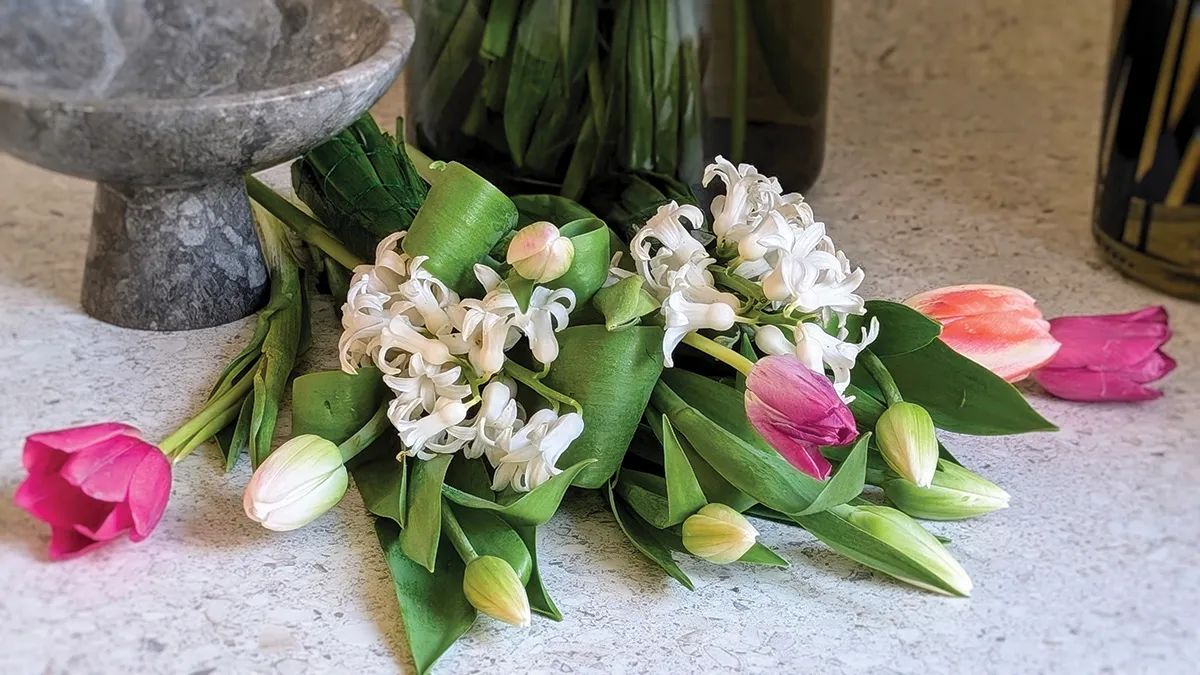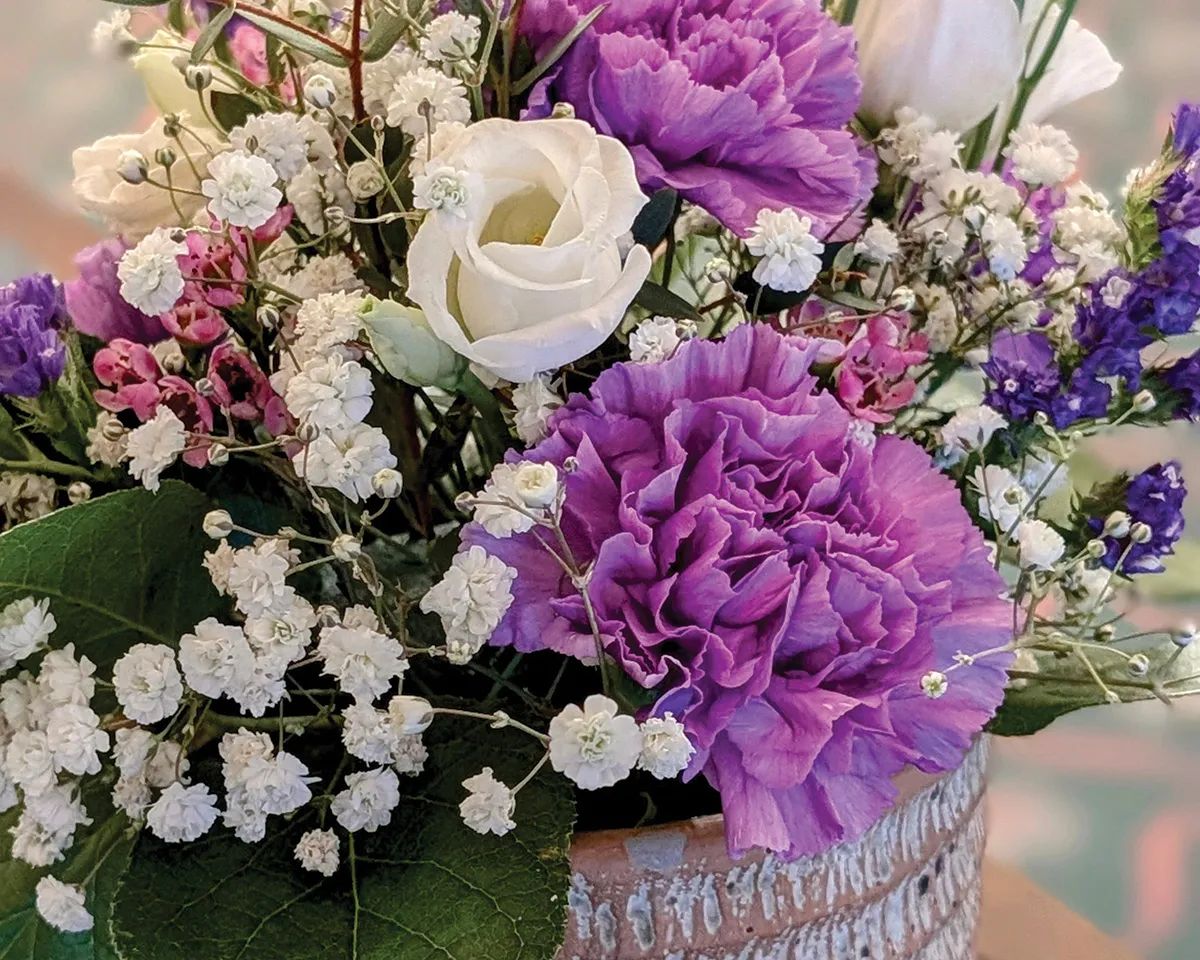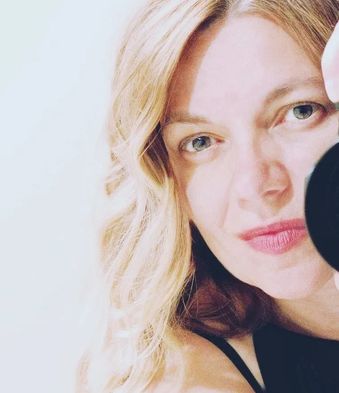
Say It With Flowers How To Create A Beautiful Homemade Bouquet
May 2025
Article and photos by Renata Haidle
I must have flowers, always and always,” said the father of Impressionism, French painter Claude Monet. Indeed, flowers bring joy and spark creativity, and having them in the home enhances our mood and well-being. Few gifts are as tender and heartfelt as a carefully crafted flower arrangement you make yourself and present to a person you love. Whether for Mother's Day, a birthday, or just because, arranging flowers at home allows you to infuse personality, creativity, and love into every stem. With a bit of inspiration, a keen eye for color, and thoughtful composition, you can design a stunning bouquet that feels personal and professional.

FINDING INSPIRATION
Great floral displays begin with inspiration. Explore Pinterest boards, YouTube tutorials, and Instagram florists for ideas. Pay attention to your favorite artwork. Dutch still lifes or Georgia O’Keeffe’s bold blossoms may spark a creative direction. Look to nature, too, where wildflower meadows, autumn forests, or the simple elegance of a single branch against the sky teach valuable lessons in color, balance, and harmony.
CHOOSING A COLOR SCHEME
Color is the soul of any bouquet. Understanding basic color theory can help you craft an arrangement with impact.
• Monochromatic: different shades of the same color create a sophisticated, cohesive look.
• Analogous: colors next to each other on the color wheel, like yellow, orange, and red, create a harmonious blend.
• Complementary: opposites on the color wheel, such as purple and yellow, offer a playful and vibrant contrast.
• Split complementary uses a main color and two adjacent to its complement, offering contrast with a softer effect. For example, blue’s complementary color is orange. Instead of orange, you would use its neighbors on the color wheel, which are red-orange and yellow-orange.
• Triadic: three evenly spaced colors (like red, blue, and yellow) create a dynamic and lively palette.
Also, consider tones, shades, and neutrals to balance bright hues and create depth in your arrangement.
SELECTING A UNIQUE CONTAINER
The vessel holding your bouquet can elevate the entire arrangement. Move beyond standard vases and think outside the box by using unexpected containers. A few ideas:
• For the book lover, an old, hollowed-out book.
• For a rustic touch, an old boot, a tin pail, or a woven basket.
• For a family-friendly creation, a mason jar hand-painted by kids.
• For a classical look, a Chinese porcelain vase.
• For an organic feel, use a bamboo-wrapped vessel or a simple clay pot for an organic feel.
• For a vintage twist, a hatbox or an antique lantern.
• For the traveler, a Moroccan spice jar.
• For an elegant table piece, a silver or copper teapot, an antique soup tureen, or even a cake stand.
If the container has harsh edges or a utilitarian look, soften it with ribbons, twine, or a fabric wrap.

BUILDING A STRONG BASE
To support your arrangement without using floral foam (which contains harmful chemicals and is not biodegradable), try instead:
• Chicken wire provides structure while allowing stems to move naturally.
• Scotch tape grid. Keeps flowers in place within wide-mouthed containers.
• Flower frogs are heavy metal or ceramic bases with spikes, perfect for minimalist and Ikebana-style arrangements.
ADDING GREENERY AND FILLERS
Greenery and filler flowers create depth and texture. Consider sculptural flowering branches, fragrant herbs like rosemary, oregano, or thyme, or unexpected elements like artichokes, flowering kale, and succulents (such as echeveria). To add an extra touch of freshness, incorporate citrus slices, whole lemons, or grapes.
SELECTING FLOWERS FOR BALANCE AND MOVEMENT
A well-composed bouquet balances different types of flowers and textures:
• Main flowers. The stars of the show can be roses, peonies, dahlias, hydrangeas, lilies, or cattleya orchids.
• Secondary Flowers. These add variety and soften the arrangement. Think Queen Anne’s lace, baby’s breath, lisianthus, poppies, or ranunculus.
• Gesture elements are any wispy, dancing stems, such as sweet peas, scabiosa, flowering branches, phalaenopsis orchids, or clematis vines. They add movement and a sense of life.
• Texture additions like berries, seed pods, or fruit (like large grape clusters) create visual interest and a unique touch.
CREATING A NATURAL FLOW
When arranging, aim for a natural, organic composition. A few key principles help achieve this:
• Keep the height proportional. Generally, your bouquet should be no more than two to three times the height of the vase.
• Embrace negative space - a bird should be able to “fly through” the arrangement.
• Use odd numbers. Grouping flowers in threes or fives creates a more natural and pleasing look.
• Add heavy elements early. If incorporating grapes or other fruit, secure them first using floral tape or skewers.
THE FINISHING TOUCHES
Once your bouquet is arranged, step back and assess its overall composition. Rotate it to view from different angles. If needed, trim stems or add small details to perfect the balance. Finally, mist the flowers lightly with water to keep them fresh.
Kristi Gainan-Sparboe, vice president of Gainan’s Midtown Flowers, offers simple yet elegant bouquet-making tips for those who feel less confident in their artistic abilities.
“Having flowers in your home on a regular basis can be a fun hobby that does not have to be complicated,” she says. A good starting point is selecting a vase with ample water supply. Gainan-Sparboe recommends a mono-botanical arrangement, which uses just one variety of flowers for a clean, cohesive look. “You can position the blooms so they are all at the same level and cut them all to the same length.,” she explains. “A good rule of thumb is to cut them one and a half times the height of the vase for a more spread-out arrangement.”
To add texture and movement, she suggests incorporating filler flowers and greenery. “Accenting with a filler flower, such as waxflower, and/or greenery comes next,” she says. “There are many different varieties of eucalyptus that can complement an arrangement.” Arranging the eucalyptus around the vase’s edge creates a natural collar that helps secure the flowers in place. “The waxflower or filler of your choice can then be added to fill in negative space,” Gainan-Sparboe adds.
Once the bouquet is arranged to your liking, she emphasizes the importance of proper care. “Change the water regularly and place the arrangement in a cool location, away from direct sunlight,” she advises.
Originally printed in the May 2025 issue of Simply Local Magazine
Never miss an issue, check out SLM's digital editions here!





